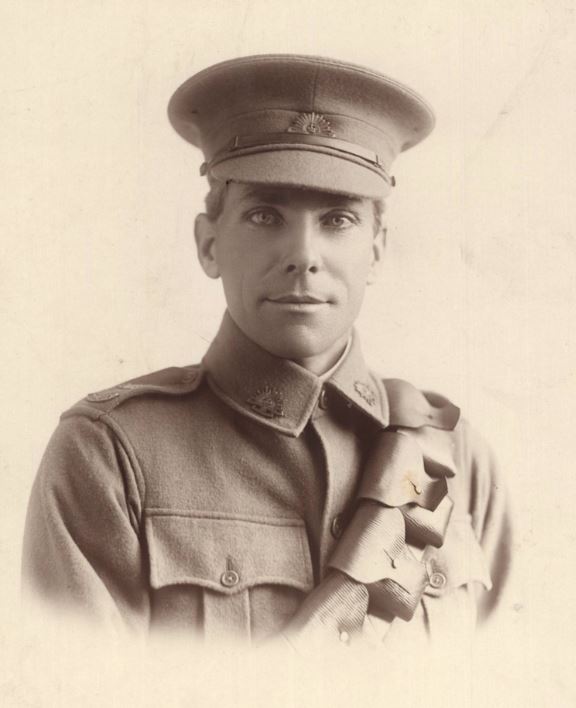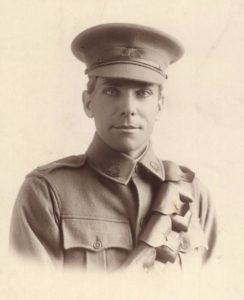The service record of Thomas Robert Rae SN 2424 tells very little about his service during World War One. The small amount of information briefly documents that he was in Egypt, went to France, spent time on furlough in England and on his return five months later was killed in action on 30 October 1917.
A letter dated 6 February 1918 from his mother to the Sydney University, where he graduated with a Bachelor of Engineering in Mining and Metallurgy in 1905, reiterates his own words regarding his time at the Western Front:
Our division went into action at Fromelles 10th July 1916. We lost in that stint 69 PC in casualties. We stayed there for 3 months and in August we went to the Somme. On Nov 5th we were again in a stunt near High Wood and immediately afterwards we came out for a spell to a little village called Cardonette about 4 miles from Amiens, there we went to a place called Waterlot Farm on the edge of the renowned Delville Wood. We went to Flers and Goudecourt [sic] in March, the Australians got to Bapaume on the 17th of March 1917 there we followed up the Infantry through Bapaume, Fremicourt, Le Boucherie and Beau Metz. This is where I left to go back to camp just outside Bapaume then came our leave.
Thomas Robert Rae was born in Orange on 18 January 1880. He was the son of George Rae (born in Roxborough, Scotland) and Margaret Bullock, who had married in Orange in 1866. The family resided at Icely but by 1881 had moved to Sydney as his father’s death is recorded there in 1881.
Thomas attended Paddington Public School, then Scots College prior to enrolling in his University course. Before his enlistment on 30 August 1915 he was the Chief Surveyor at the Great Cobar Mines. His death recorded in the Daily Telegraph on 8 December 1917 stated:
He was offered a commission as captain, but he preferred to go as a sapper
Thomas embarked at Sydney for Egypt on 11 December 1915 via HMAT RMS Mooltan as part of the 12th Reinforcements of the 14th Field Company Engineers going to Tel-el-Kebir. He spent six months in Egypt prior to embarking Kinfauns Castle at Alexandria for Marseilles in June 1916. Apart from two weeks’ furlough in England Thomas spent the rest of his time surveying trenches at the front.
According to Thomas Rae’s profile on the Sydney University Beyond 1914 website he was mentioned in despatches.
Sapper Thomas Robert Rae was killed in action on 30 October 1917. Australian Red Cross Society Wounded and Missing Files contain several reports of his death. He was repairing a pill-box on Westhoek Ridge at the time and was one of the eight men who died. A further five men were wounded.
Major Henry Bachtold of the 14th Field Company of Engineers wrote to Thomas’ mother on 13 November 1917 informing her of her son’s death:
I very much regret having to inform you that your son Sapper Thomas Robert Rae was killed in action on the morning of Tuesday October 30th 1917.
A high explosive shell burst close to him and his death was instantaneous.
He was buried close to where he was hit and his grave is alongside the Westhoek – Zonnebeke Road at a cross roads some 1000 yards east of the cross roads in Westhoek.
Your son had done excellent survey work for the Company and his loss is regretted by all.
Please accept my deepest sympathy
There is no known grave for Sapper Thomas Robert Rae SN 2424. He is commemorated on panel 7 of the Ypres (Menin Gate) Memorial in Belgium, on panel number 24 on the Roll of Honour at the Australian War Memorial in Canberra, on the University of Sydney War Memorial Carillon and on the Sydney University Beyond 1914 website.
* Sharon Jameson, August 2018


